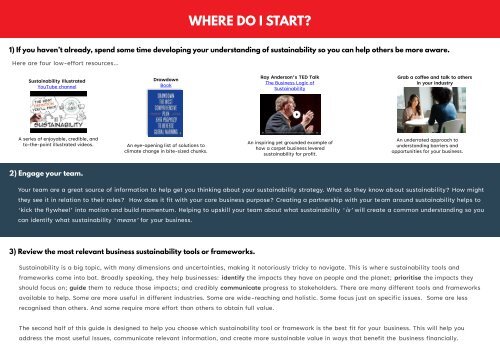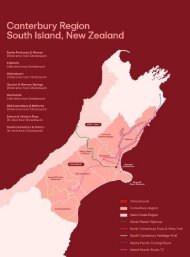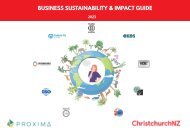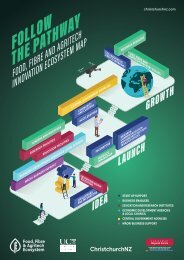SME Sustainability & Impact Guide (FINAL Jan 2024)
You also want an ePaper? Increase the reach of your titles
YUMPU automatically turns print PDFs into web optimized ePapers that Google loves.
WHERE DO I START?<br />
1) If you haven’t already, spend some time developing your understanding of sustainability so you can help others be more aware.<br />
Here are four low-effort resources…<br />
<strong>Sustainability</strong> Illustrated<br />
YouTube channel<br />
Drawdown<br />
Book<br />
Ray Anderson’s TED Talk<br />
The Business Logic of<br />
<strong>Sustainability</strong><br />
Grab a coffee and talk to others<br />
in your industry<br />
A series of enjoyable, credible, and<br />
to-the-point illustrated videos.<br />
An eye-opening list of solutions to<br />
climate change in bite-sized chunks.<br />
An inspiring yet grounded ex<strong>amp</strong>le of<br />
how a carpet business levered<br />
sustainability for profit.<br />
An underrated approach to<br />
understanding barriers and<br />
opportunities for your business.<br />
2) Engage your team.<br />
Your team are a great source of information to help get you thinking about your sustainability strategy. What do they know ab out sustainability? How might<br />
they see it in relation to their roles? How does it fit with your core business purpose? Creating a partnership with your te am around sustainability helps to<br />
‘kick the flywheel’ into motion and build momentum. Helping to upskill your team about what sustainability ‘is’ will create a common understanding so you<br />
can identify what sustainability ‘means’ for your business.<br />
3) Review the most relevant business sustainability tools or frameworks.<br />
<strong>Sustainability</strong> is a big topic, with many dimensions and uncertainties, making it notoriously tricky to navigate. This is wher e sustainability tools and<br />
frameworks come into bat. Broadly speaking, they help businesses: identify the impacts they have on people and the planet; prioritise the impacts they<br />
should focus on; guide them to reduce those impacts; and credibly communicate progress to stakeholders. There are many different tools and frameworks<br />
available to help. Some are more useful in different industries. Some are wide-reaching and holistic. Some focus just on specific issues. Some are less<br />
recognised than others. And some require more effort than others to obtain full value.<br />
The second half of this guide is designed to help you choose which sustainability tool or framework is the best fit for your business. This will help you<br />
address the most useful issues, communicate relevant information, and create more sustainable value in ways that benefit the business financially.

















